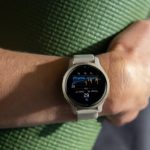Understanding Your Summer SPF Needs: A Complete Guide to Sun Protection Types
The Science Behind SPF Classifications
When summer arrives and the sun’s rays intensify, understanding the different types of sun protection factor (SPF) becomes crucial for maintaining healthy skin throughout the season. SPF, or Sun Protection Factor, measures how well a sunscreen protects against ultraviolet B (UVB) rays, which are primarily responsible for sunburn and contribute significantly to skin cancer development. The classification system helps consumers choose the appropriate level of protection based on their skin type, outdoor activities, and sun exposure duration.
The effectiveness of SPF is not linear, which often surprises many people. While SPF 15 blocks approximately 93% of UVB rays, SPF 30 blocks about 97%, and SPF 50 blocks roughly 98%. This means that higher SPF numbers provide incrementally smaller increases in protection, but these small differences can be significant for people with sensitive skin or those spending extended periods in direct sunlight. Understanding these nuances helps you make informed decisions about which SPF type best suits your summer lifestyle and skin protection needs.
Low SPF Protection: SPF 15-25 for Light Daily Activities
Low SPF protection, typically ranging from SPF 15 to SPF 25, serves as the foundation for everyday sun protection during summer months. This category works well for individuals with naturally darker skin tones who tan easily and rarely burn, or for those engaging in brief outdoor activities such as walking to work, running errands, or spending short periods outside during peak sun hours. The formulations in this range often feel lighter on the skin and integrate well with daily skincare routines and makeup applications.
People who choose low SPF protection should understand that reapplication becomes even more critical than with higher SPF products. The protection duration depends on factors including skin type, sweating, swimming, and the intensity of UV exposure. For summer activities lasting longer than two hours or involving water exposure, low SPF products may not provide adequate protection, potentially leading to sunburn and long-term skin damage. However, for urban environments where buildings provide intermittent shade and exposure periods are relatively brief, low SPF protection can effectively prevent the gradual sun damage that accumulates from daily exposure.
Medium SPF Protection: SPF 30-50 for Active Summer Lifestyles
Medium SPF protection represents the sweet spot for most summer activities and skin types, offering robust protection without the heaviness often associated with higher SPF formulations. Dermatologists frequently recommend SPF 30 as the minimum effective protection for extended outdoor activities, making this range ideal for beach days, hiking, gardening, outdoor sports, and other active summer pursuits. The protection level effectively blocks harmful UVB rays while remaining cosmetically acceptable for daily wear.
This SPF range accommodates various skin types, from those who burn moderately to those who tan gradually. The formulations typically balance protection with wearability, incorporating features like water resistance, sweat resistance, and non-comedogenic properties that prevent clogged pores during active use. Medium SPF products often include additional beneficial ingredients such as antioxidants, moisturizers, and sometimes chemical or physical UV filters that provide broad-spectrum protection against both UVA and UVB rays, making them comprehensive solutions for summer sun protection.
High SPF Protection: SPF 50+ for Maximum Defense
High SPF protection, encompassing SPF 50 and above, provides maximum defense against harmful UV radiation and proves essential for certain individuals and situations. People with very fair skin, those with a history of skin cancer, individuals taking photosensitizing medications, and anyone planning extended exposure to intense sunlight should consider high SPF protection as their primary defense against sun damage. This category also serves well for high-altitude activities, water sports, and tropical vacations where UV intensity reaches extreme levels.
The formulations in high SPF products often feel thicker and may require more careful application to ensure even coverage and optimal protection. While some people worry about the potential for vitamin D deficiency when using high SPF products, research shows that adequate vitamin D synthesis can still occur with proper sun protection practices. High SPF sunscreens frequently incorporate advanced technologies such as zinc oxide or titanium dioxide for physical protection, chemical filters for comprehensive coverage, and specialized ingredients that enhance the product’s staying power during sweating and water exposure.
Choosing the Right SPF Type for Your Summer Activities
Selecting the appropriate SPF type requires careful consideration of multiple factors including your skin’s natural response to sun exposure, the duration and intensity of your planned activities, and environmental conditions such as altitude, latitude, and reflective surfaces like water or sand. Fair-skinned individuals who burn easily should generally opt for higher SPF protection, while those with naturally darker skin tones may find medium SPF adequate for most activities. However, everyone benefits from understanding that no sunscreen provides complete protection, and combining SPF with other protective measures creates the most effective sun safety strategy.
The time of day significantly impacts SPF selection, with UV rays reaching peak intensity between 10 AM and 4 PM during summer months. Morning and late afternoon activities may allow for lower SPF protection, while midday exposure requires higher protection levels regardless of skin type. Geographic location also plays a crucial role, as UV intensity increases with altitude and proximity to the equator, requiring higher SPF protection in mountainous regions or tropical destinations compared to temperate climates at sea level.
Customizing Sun Protection Based on Skin Phototype Classification
Understanding your skin’s phototype provides the foundation for developing an effective summer SPF strategy that protects against both immediate sunburn and long-term skin damage. The Fitzpatrick Skin Type Classification system divides skin into six categories based on genetic factors, natural coloring, and typical response to sun exposure, helping individuals select appropriate SPF levels and develop comprehensive sun protection routines. Type I skin, characterized by very fair complexion, light eyes, and blonde or red hair, burns easily and never tans, requiring the highest level of SPF protection and comprehensive sun avoidance strategies during peak intensity hours.
Type II through IV skin types represent the majority of the population, with gradually increasing tolerance for sun exposure and decreasing burn risk, but all requiring substantial sun protection during summer months. Even Type V and VI skin, which rarely burns and tans deeply, benefits from SPF protection to prevent premature aging, hyperpigmentation, and skin cancer development. The misconception that darker skin doesn’t need sun protection has led to delayed skin cancer diagnoses in individuals with naturally higher melanin content, making universal SPF use an important public health recommendation.
Genetic factors beyond visible skin color influence sun sensitivity, including family history of skin cancer, certain medical conditions, and medications that increase photosensitivity. Individuals with multiple risk factors should consider adopting sun protection strategies typically recommended for fairer skin types, regardless of their natural coloring. Personal history of severe sunburns, particularly during childhood, increases lifetime skin cancer risk and should influence SPF selection toward higher protection levels throughout adulthood.
Activity-Specific SPF Applications and Reapplication Strategies
Different summer activities create varying demands on sunscreen performance, requiring tailored application techniques and reapplication schedules to maintain effective protection. Water-based activities such as swimming, surfing, paddleboarding, and beach volleyball expose skin to both direct UV rays and reflected radiation from water surfaces, which can increase UV exposure by up to 15%. Water-resistant sunscreens maintain their SPF rating for specified periods during water exposure, but no sunscreen is truly waterproof, making frequent reapplication essential for aquatic activities.
High-intensity activities including running, cycling, tennis, and hiking generate sweat that can dilute and wash away sunscreen, reducing protection effectiveness even with sweat-resistant formulations. Apply sunscreen generously 15-30 minutes before activity begins, allowing proper absorption and film formation on the skin surface. During extended activities, reapplication every hour or immediately after toweling off provides optimal protection, with spray formulations offering convenient touch-ups during brief activity breaks.
Urban summer activities present unique sun protection challenges, with reflective surfaces such as concrete, glass buildings, and metal structures intensifying UV exposure in unexpected ways. Office workers who spend lunch hours outdoors, urban walkers, and outdoor dining enthusiasts benefit from daily SPF application as part of morning routines, with reapplication products such as SPF powders or setting sprays providing convenient touch-ups throughout the day without disrupting makeup or professional appearance.
Comprehensive Sun Protection Beyond SPF Numbers
Effective summer sun protection requires a multi-layered approach that combines appropriate SPF selection with physical protection, timing strategies, and environmental awareness to create comprehensive defense against UV damage. Physical barriers including wide-brimmed hats, UV-protective clothing, and sunglasses provide reliable protection that doesn’t require reapplication and remains effective regardless of sweating or water exposure. Seek shade during peak UV hours between 10 AM and 4 PM, when ultraviolet radiation reaches maximum intensity and causes damage most rapidly.
UV-protective clothing has evolved significantly, with modern fabrics providing UPF (Ultraviolet Protection Factor) ratings that indicate how much UV radiation penetrates the fabric. Tightly woven fabrics, darker colors, and synthetic materials generally provide superior UV protection compared to loose weaves, light colors, and natural fibers. Wet clothing provides less UV protection than dry fabric, making cover-ups and UV shirts essential for water activities where traditional sunscreen may be less reliable.
Environmental factors significantly impact UV exposure intensity, requiring adjustment of sun protection strategies based on location, season, altitude, and weather conditions. Snow, sand, and water reflect UV rays, creating exposure from multiple angles that can cause sunburn in unexpected areas such as under the chin, inside the nose, and on the ears. High-altitude locations expose individuals to increased UV intensity, with radiation increasing approximately 4% for every 1000 feet of elevation gain, making higher SPF protection essential for mountain activities even during cooler weather.










